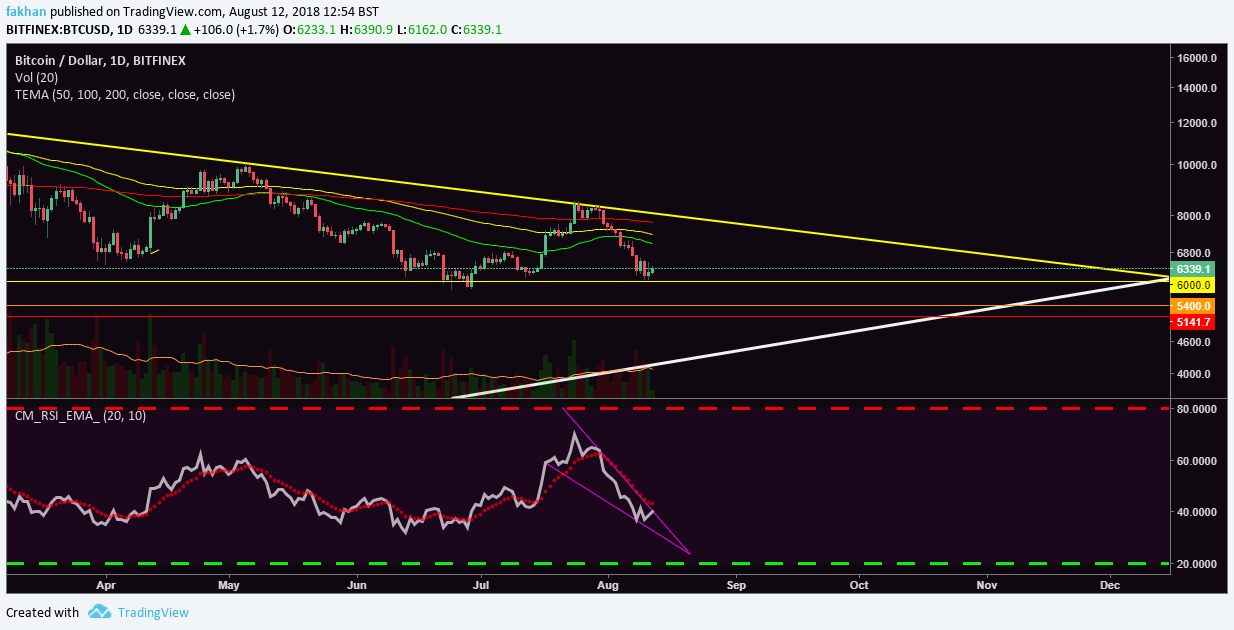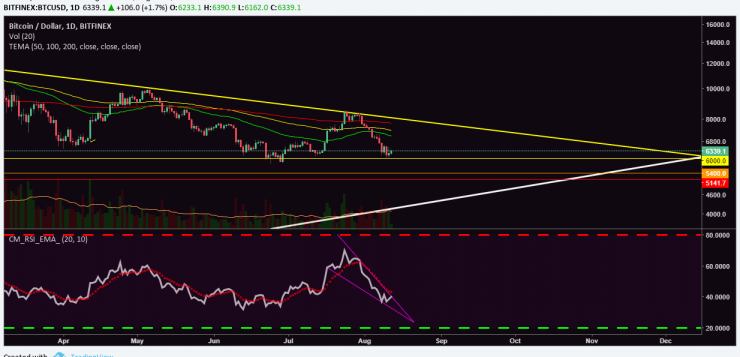
Bitcoin (BTC) bounced strongly and cleanly off the exact $6,000 level as can be seen on the BTC/USD daily chart above. The price crashed hard on Friday but since then, it has now formed two consecutive green candles over the weekend. While this may be something every bull wants to see, weekend activity generally does not matter much as most traders are away on weekends and the low volume makes it easy for a few big players to manipulate the market.
It is true that a lot of Bitcoin (BTC) buying has been going on in OTC markets over the last few months. It is also true that institutional players are preparing to get involved in the game. Intercontinental Exchange (ICE), parent company of the New York Stock Exchange has recently announced a cryptocurrency platform, Bakkt. Circle owned by Goldman Sachs recently acquired popular crypto exchange, Poloniex. Long story short, in the past eight months, big players in the financial sectors have been positioning themselves to enter the space.
These are all exciting developments that would result in more ETPs for Bitcoin (BTC) in the future to trade and overall, the market will gain a lot more credibility, traction and adoption long term. However, short term smart money is busy accumulating but it wouldn’t mind if the price were to fall further. They are not buying on exchanges anyway, and they are looking to accumulate all they can before the next rally. So, if Bitcoin (BTC) breaks below $6,000 and continues to fall, it will be in their interest to let it fall. If the price were to fall close to $5,000 that would still be pretty normal for the big players although retail investors would be running for the gates, panic selling as if Bitcoin (BTC) is headed to zero.

Most Bitcoin (BTC) traders get so caught up in shorter timeframes that they completely forget about the big picture. The above monthly chart for BTC/USD shows how Bitcoin (BTC) has traded since the beginning of 2012. This trend has never been breached. The only reason Bitcoin (BTC) could break below this trend line now would be if Bitcoin (BTC) turns out to be a scam. Otherwise, there is absolutely no chance. The reason for that is that Bitcoin (BTC) was created to be an effective store of value. Its price was meant to appreciate with time and that too in a systematic manner.
Bitcoin (BTC) was designed to generate a set number of units. Only 21 million Bitcoin (BTC) will ever be in existence. Currently 17.2 million have been mined and are in circulation. The way Bitcoin (BTC) mining works is that miners are rewarded for every valid block discovered. After every 210,000 blocks are mined, halving kicks in. The way halving works is that it reduces the mining reward to half. So far, there have been two halvenings.
When Bitcoin (BTC) mining started, the reward was set at 50 BTC, which during first halvening was cut down to 25 BTC in 2012 and was then cut down to 12.5 BTC in 2016. The next halvening is expected in 2020, which will cut down the reward to 6.25 BTC. Bitcoin (BTC)’s supply is controlled by the miners. The price of any asset is determined by supply and demand. As miner rewards reduce, they will stop selling at prices they cannot make a profit at, thus reducing the supply compared to demand, which will keep driving Bitcoin (BTC)’s price higher.







